
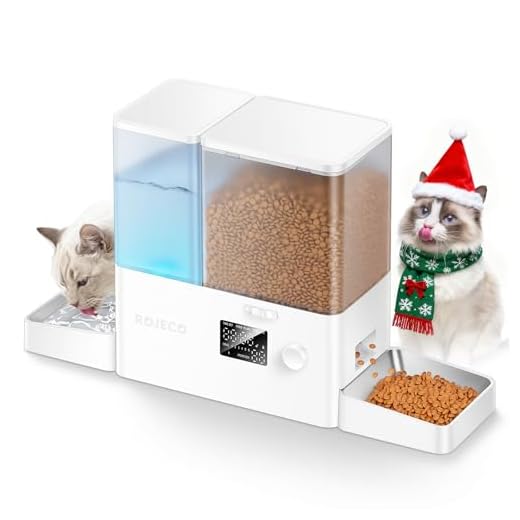
Mixing hydration sources for different pets is not advisable. Each species has distinct dietary needs and potential health concerns that could arise from sharing. It’s crucial to provide separate drinking vessels for both furry friends.
Research indicates that cross-contamination can occur when different animals use the same container. Bacteria and parasites can easily transfer between species, which may lead to illnesses. For instance, certain pathogens that affect one species may not impact the other, but they can still pose a risk to overall health in a shared environment.
Ensuring that each companion has its own designated drinking area promotes better hydration habits. Regular cleaning of individual containers is essential to maintain freshness and prevent any buildup of harmful substances. By offering separate hydration sources, you contribute to a healthier living space for your beloved companions.
Sharing Hydration Source
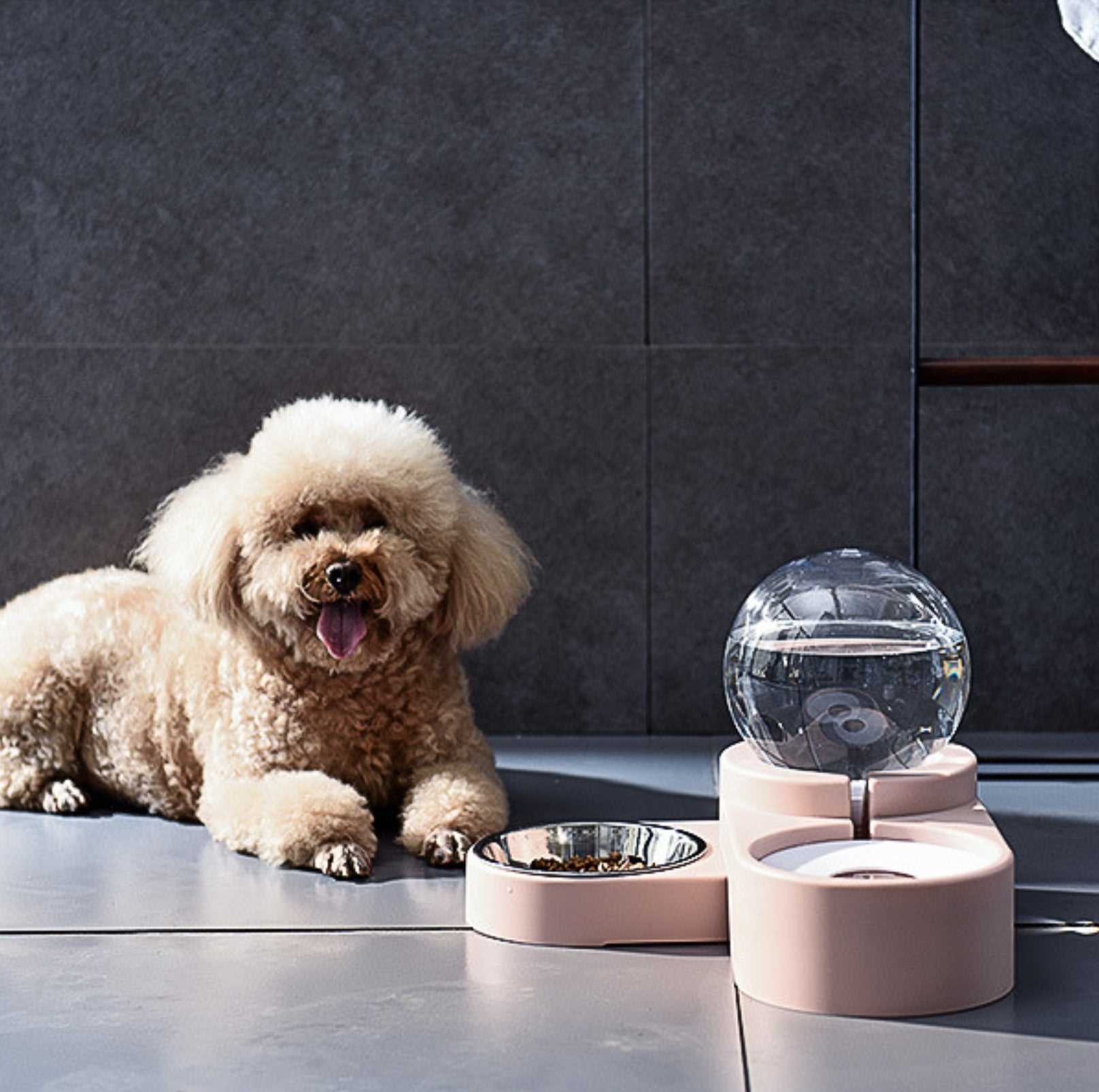
It’s not advisable to mix drinking containers for different species due to potential health risks. Here are some key points to consider:
- Differences in dietary needs can lead to contamination. For example, residue from food can affect the other pet’s health.
- Distinct drinking habits might result in one animal dominating the source, causing stress for the other.
- Germs and bacteria can transfer between them, increasing the likelihood of illness.
- Individual preferences for drinking styles could lead to competition, which might create tension.
For a harmonious household, separate containers are the best solution. This ensures that hydration remains healthy and stress-free for both companions.
Health Risks of Shared Water Bowls
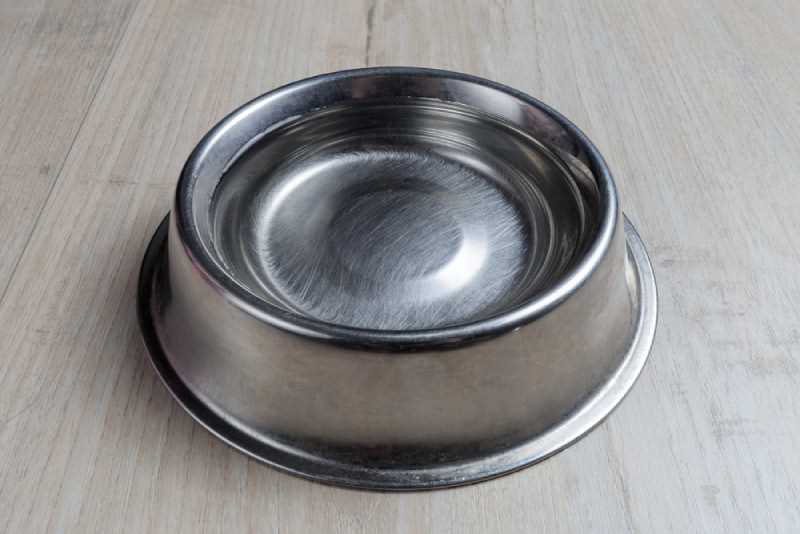
Mixing hydration stations poses potential health hazards. Bacteria transfer is a primary concern; pathogens from one pet can contaminate the source, leading to gastrointestinal issues. Each species has distinct microbiomes, and those differences can complicate digestive health, especially for felines with sensitive stomachs.
Parasites like Giardia or Cryptosporidium can also spread through communal hydration sources. These organisms thrive in moist environments and can cause severe illness, particularly in younger or older companions whose immune systems may not be resilient.
Furthermore, allergies might flare up if one animal’s saliva contains allergens that affect the other. This is particularly relevant for sensitive noses and skin, which can react adversely to foreign substances. It’s wise to monitor for any signs of distress after shared access.
To mitigate these risks, I recommend separate hydration stations. Regular cleaning is essential, and providing fresh, clean supplies tailored to each furry friend’s needs ensures their well-being. Keeping their drinking areas distinct promotes a healthier living environment for everyone involved.
Behavioral Considerations for Dogs and Cats
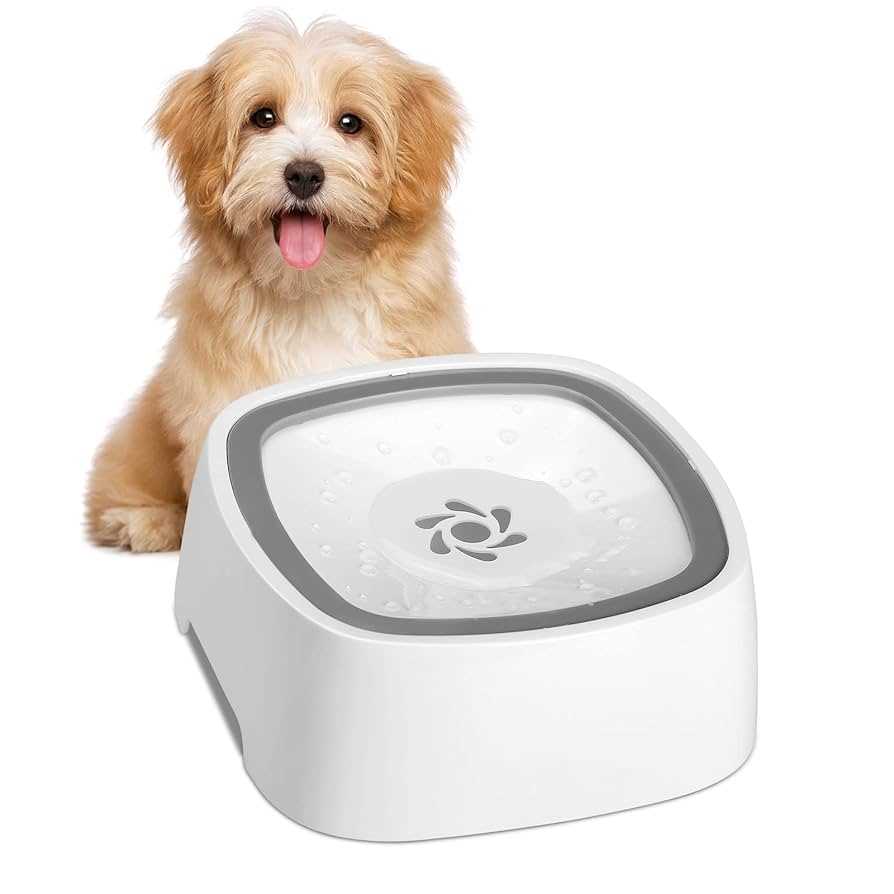
Establish distinct feeding areas for my canine and feline friends. This reduces competition and territorial disputes, promoting a peaceful coexistence. Each pet should feel secure in their space, allowing them to eat and drink without stress.
Observe individual habits. Some of my furry companions prefer to drink alone, while others may not mind sharing. Understanding their preferences helps in creating a harmonious environment. If I notice any signs of anxiety or aggression during sharing, it’s best to separate their drinking spots.
Utilize different bowl designs. A raised bowl for one and a flat one for the other can cater to their unique postures. This simple change can minimize discomfort and promote better hydration habits.
Monitor interaction during mealtime. If one tends to guard resources, it’s crucial to supervise their behavior. Training can help manage any possessiveness, ensuring both pets enjoy their meals without conflicts.
Introduce gradual changes. If I decide to combine their drinking areas, doing so slowly can ease the transition. Start by placing the bowls close together and gradually moving them to a shared spot, allowing them to adjust over time.
Recognize that social dynamics vary. Some individuals may thrive in a shared environment, while others may find it stressful. Always prioritize their emotional well-being and adjust accordingly. Maintaining a calm atmosphere is key to their happiness.
Best Practices for Separate Water Stations
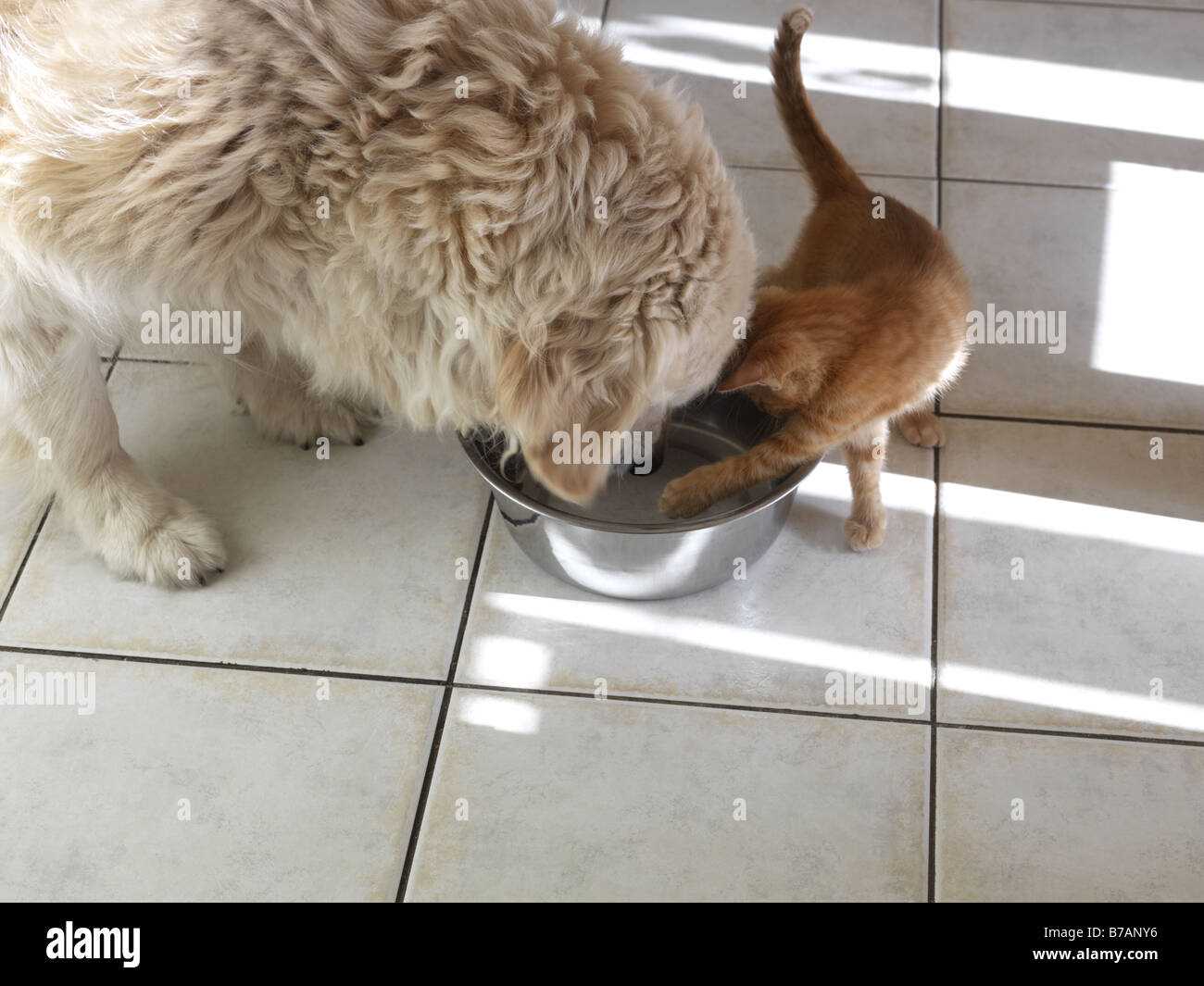
Establish dedicated drinking areas for each pet to prevent territorial disputes and ensure hydration. Use separate vessels for each, ideally placed in different locations within your home. This approach reduces stress, as both animals can drink without interference.
Choose bowls that suit the size and preferences of each creature. Elevated or wide designs may be more comfortable for larger breeds, while shallow, smaller bowls can cater to petite companions. Keeping the containers clean is crucial; wash them regularly to prevent bacteria buildup.
Monitor the water levels frequently. Freshness is key; change the liquid daily to entice both to drink more. If one pet seems hesitant, consider adding a splash of low-sodium broth to make the water more appealing, similar to tips on how to entice a cat to eat.
Observe each animal’s drinking habits and adjust accordingly. If one consumes significantly more than the other, consult with a veterinarian to rule out any health concerns. This can also be a good time to assess dietary needs, such as knowing when a cat can eat dry food.
Lastly, ensure that both stations are easily accessible and away from high-traffic areas. This will create a comfortable environment where each can hydrate without distractions.
Mixing hydration sources for different pets is not advisable. Each species has distinct dietary needs and potential health concerns that could arise from sharing. It’s crucial to provide separate drinking vessels for both furry friends.
Research indicates that cross-contamination can occur when different animals use the same container. Bacteria and parasites can easily transfer between species, which may lead to illnesses. For instance, certain pathogens that affect one species may not impact the other, but they can still pose a risk to overall health in a shared environment.
Ensuring that each companion has its own designated drinking area promotes better hydration habits. Regular cleaning of individual containers is essential to maintain freshness and prevent any buildup of harmful substances. By offering separate hydration sources, you contribute to a healthier living space for your beloved companions.
Sharing Hydration Source

It’s not advisable to mix drinking containers for different species due to potential health risks. Here are some key points to consider:
- Differences in dietary needs can lead to contamination. For example, residue from food can affect the other pet’s health.
- Distinct drinking habits might result in one animal dominating the source, causing stress for the other.
- Germs and bacteria can transfer between them, increasing the likelihood of illness.
- Individual preferences for drinking styles could lead to competition, which might create tension.
For a harmonious household, separate containers are the best solution. This ensures that hydration remains healthy and stress-free for both companions.
Health Risks of Shared Water Bowls

Mixing hydration stations poses potential health hazards. Bacteria transfer is a primary concern; pathogens from one pet can contaminate the source, leading to gastrointestinal issues. Each species has distinct microbiomes, and those differences can complicate digestive health, especially for felines with sensitive stomachs.
Parasites like Giardia or Cryptosporidium can also spread through communal hydration sources. These organisms thrive in moist environments and can cause severe illness, particularly in younger or older companions whose immune systems may not be resilient.
Furthermore, allergies might flare up if one animal’s saliva contains allergens that affect the other. This is particularly relevant for sensitive noses and skin, which can react adversely to foreign substances. It’s wise to monitor for any signs of distress after shared access.
To mitigate these risks, I recommend separate hydration stations. Regular cleaning is essential, and providing fresh, clean supplies tailored to each furry friend’s needs ensures their well-being. Keeping their drinking areas distinct promotes a healthier living environment for everyone involved.
Behavioral Considerations for Dogs and Cats

Establish distinct feeding areas for my canine and feline friends. This reduces competition and territorial disputes, promoting a peaceful coexistence. Each pet should feel secure in their space, allowing them to eat and drink without stress.
Observe individual habits. Some of my furry companions prefer to drink alone, while others may not mind sharing. Understanding their preferences helps in creating a harmonious environment. If I notice any signs of anxiety or aggression during sharing, it’s best to separate their drinking spots.
Utilize different bowl designs. A raised bowl for one and a flat one for the other can cater to their unique postures. This simple change can minimize discomfort and promote better hydration habits.
Monitor interaction during mealtime. If one tends to guard resources, it’s crucial to supervise their behavior. Training can help manage any possessiveness, ensuring both pets enjoy their meals without conflicts.
Introduce gradual changes. If I decide to combine their drinking areas, doing so slowly can ease the transition. Start by placing the bowls close together and gradually moving them to a shared spot, allowing them to adjust over time.
Recognize that social dynamics vary. Some individuals may thrive in a shared environment, while others may find it stressful. Always prioritize their emotional well-being and adjust accordingly. Maintaining a calm atmosphere is key to their happiness.
Best Practices for Separate Water Stations

Establish dedicated drinking areas for each pet to prevent territorial disputes and ensure hydration. Use separate vessels for each, ideally placed in different locations within your home. This approach reduces stress, as both animals can drink without interference.
Choose bowls that suit the size and preferences of each creature. Elevated or wide designs may be more comfortable for larger breeds, while shallow, smaller bowls can cater to petite companions. Keeping the containers clean is crucial; wash them regularly to prevent bacteria buildup.
Monitor the water levels frequently. Freshness is key; change the liquid daily to entice both to drink more. If one pet seems hesitant, consider adding a splash of low-sodium broth to make the water more appealing, similar to tips on how to entice a cat to eat.
Observe each animal’s drinking habits and adjust accordingly. If one consumes significantly more than the other, consult with a veterinarian to rule out any health concerns. This can also be a good time to assess dietary needs, such as knowing when a cat can eat dry food.
Lastly, ensure that both stations are easily accessible and away from high-traffic areas. This will create a comfortable environment where each can hydrate without distractions.
Mixing hydration sources for different pets is not advisable. Each species has distinct dietary needs and potential health concerns that could arise from sharing. It’s crucial to provide separate drinking vessels for both furry friends.
Research indicates that cross-contamination can occur when different animals use the same container. Bacteria and parasites can easily transfer between species, which may lead to illnesses. For instance, certain pathogens that affect one species may not impact the other, but they can still pose a risk to overall health in a shared environment.
Ensuring that each companion has its own designated drinking area promotes better hydration habits. Regular cleaning of individual containers is essential to maintain freshness and prevent any buildup of harmful substances. By offering separate hydration sources, you contribute to a healthier living space for your beloved companions.
Sharing Hydration Source

It’s not advisable to mix drinking containers for different species due to potential health risks. Here are some key points to consider:
- Differences in dietary needs can lead to contamination. For example, residue from food can affect the other pet’s health.
- Distinct drinking habits might result in one animal dominating the source, causing stress for the other.
- Germs and bacteria can transfer between them, increasing the likelihood of illness.
- Individual preferences for drinking styles could lead to competition, which might create tension.
For a harmonious household, separate containers are the best solution. This ensures that hydration remains healthy and stress-free for both companions.
Health Risks of Shared Water Bowls

Mixing hydration stations poses potential health hazards. Bacteria transfer is a primary concern; pathogens from one pet can contaminate the source, leading to gastrointestinal issues. Each species has distinct microbiomes, and those differences can complicate digestive health, especially for felines with sensitive stomachs.
Parasites like Giardia or Cryptosporidium can also spread through communal hydration sources. These organisms thrive in moist environments and can cause severe illness, particularly in younger or older companions whose immune systems may not be resilient.
Furthermore, allergies might flare up if one animal’s saliva contains allergens that affect the other. This is particularly relevant for sensitive noses and skin, which can react adversely to foreign substances. It’s wise to monitor for any signs of distress after shared access.
To mitigate these risks, I recommend separate hydration stations. Regular cleaning is essential, and providing fresh, clean supplies tailored to each furry friend’s needs ensures their well-being. Keeping their drinking areas distinct promotes a healthier living environment for everyone involved.
Behavioral Considerations for Dogs and Cats

Establish distinct feeding areas for my canine and feline friends. This reduces competition and territorial disputes, promoting a peaceful coexistence. Each pet should feel secure in their space, allowing them to eat and drink without stress.
Observe individual habits. Some of my furry companions prefer to drink alone, while others may not mind sharing. Understanding their preferences helps in creating a harmonious environment. If I notice any signs of anxiety or aggression during sharing, it’s best to separate their drinking spots.
Utilize different bowl designs. A raised bowl for one and a flat one for the other can cater to their unique postures. This simple change can minimize discomfort and promote better hydration habits.
Monitor interaction during mealtime. If one tends to guard resources, it’s crucial to supervise their behavior. Training can help manage any possessiveness, ensuring both pets enjoy their meals without conflicts.
Introduce gradual changes. If I decide to combine their drinking areas, doing so slowly can ease the transition. Start by placing the bowls close together and gradually moving them to a shared spot, allowing them to adjust over time.
Recognize that social dynamics vary. Some individuals may thrive in a shared environment, while others may find it stressful. Always prioritize their emotional well-being and adjust accordingly. Maintaining a calm atmosphere is key to their happiness.
Best Practices for Separate Water Stations

Establish dedicated drinking areas for each pet to prevent territorial disputes and ensure hydration. Use separate vessels for each, ideally placed in different locations within your home. This approach reduces stress, as both animals can drink without interference.
Choose bowls that suit the size and preferences of each creature. Elevated or wide designs may be more comfortable for larger breeds, while shallow, smaller bowls can cater to petite companions. Keeping the containers clean is crucial; wash them regularly to prevent bacteria buildup.
Monitor the water levels frequently. Freshness is key; change the liquid daily to entice both to drink more. If one pet seems hesitant, consider adding a splash of low-sodium broth to make the water more appealing, similar to tips on how to entice a cat to eat.
Observe each animal’s drinking habits and adjust accordingly. If one consumes significantly more than the other, consult with a veterinarian to rule out any health concerns. This can also be a good time to assess dietary needs, such as knowing when a cat can eat dry food.
Lastly, ensure that both stations are easily accessible and away from high-traffic areas. This will create a comfortable environment where each can hydrate without distractions.








